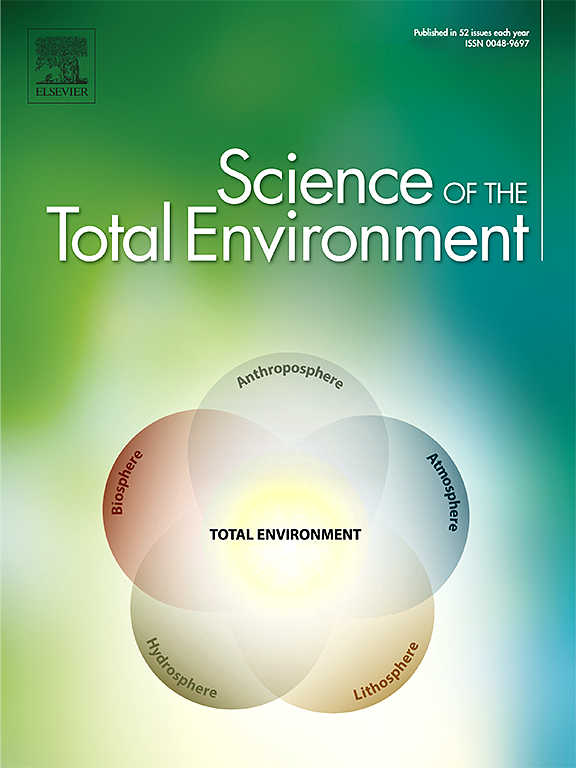Behavioral and physiological effects of difenoconazole on stingless bees: A multi-species analysis
IF 8.2
1区 环境科学与生态学
Q1 ENVIRONMENTAL SCIENCES
引用次数: 0
Abstract
Stingless bees, vital to ecosystems and plant production, face increasing threats from pesticide use, with poorly understood potential impacts of fungicides on these pollinators. The goal of this work was to evaluate the effect of contact or oral exposure to difenoconazole, a broad-spectrum fungicide, on foragers of three species of stingless bees: Frieseomelitta varia, Melipona mondury, and Trigona spinipes. The study employed a field-realistic dose of difenoconazole (0.075 mg a.i./mL, referred to as 1×) and its dilutions (10× or 100×) to assess survival and food consumption. The recommended field dose was used to evaluate behaviors, as well as total hemocyte count (THC), and midgut morphology. Contact or oral exposure increased THC in F. varia, while oral exposure decreased food consumed, distance walked, and social interactions, and caused injuries to the midgut. In M. mondury, contact exposure decreased survival and THC while increasing interactions, whereas oral exposure increased walking distance and interactions. For T. spinipes, contact exposure increased walking distance and interactions. Exposures caused adverse effects with variations in the level or type of damage depending on the species and route of exposure. This emphasizes the significance of understanding the potential impacts of fungicides on various pollinators, particularly on stingless bees.

求助全文
约1分钟内获得全文
求助全文
来源期刊

Science of the Total Environment
环境科学-环境科学
CiteScore
17.60
自引率
10.20%
发文量
8726
审稿时长
2.4 months
期刊介绍:
The Science of the Total Environment is an international journal dedicated to scientific research on the environment and its interaction with humanity. It covers a wide range of disciplines and seeks to publish innovative, hypothesis-driven, and impactful research that explores the entire environment, including the atmosphere, lithosphere, hydrosphere, biosphere, and anthroposphere.
The journal's updated Aims & Scope emphasizes the importance of interdisciplinary environmental research with broad impact. Priority is given to studies that advance fundamental understanding and explore the interconnectedness of multiple environmental spheres. Field studies are preferred, while laboratory experiments must demonstrate significant methodological advancements or mechanistic insights with direct relevance to the environment.
 求助内容:
求助内容: 应助结果提醒方式:
应助结果提醒方式:


